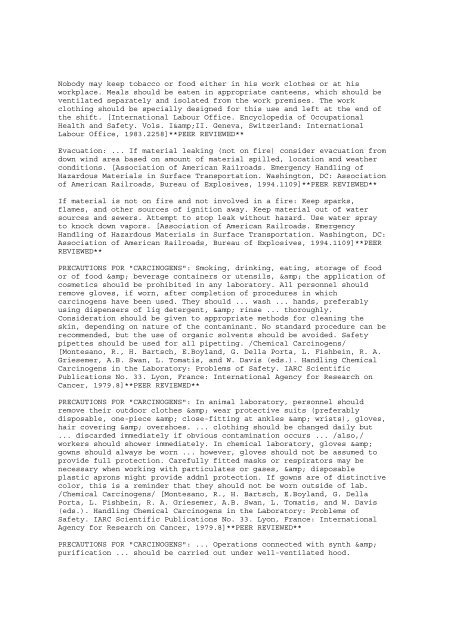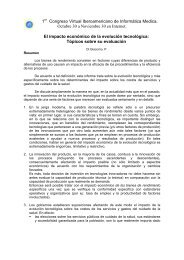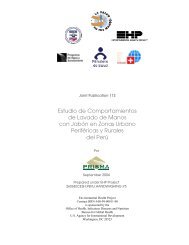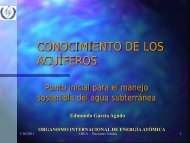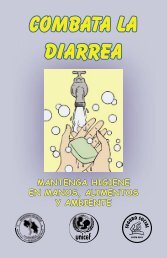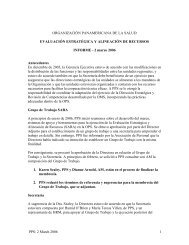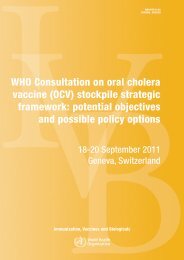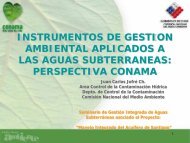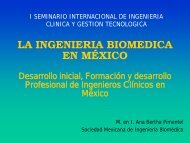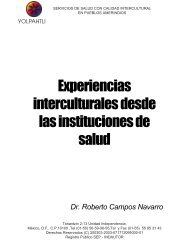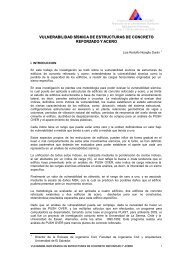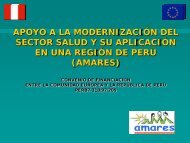a database of the National Library of M
a database of the National Library of M
a database of the National Library of M
Create successful ePaper yourself
Turn your PDF publications into a flip-book with our unique Google optimized e-Paper software.
Nobody may keep tobacco or food ei<strong>the</strong>r in his work clo<strong>the</strong>s or at hisworkplace. Meals should be eaten in appropriate canteens, which should beventilated separately and isolated from <strong>the</strong> work premises. The workclothing should be specially designed for this use and left at <strong>the</strong> end <strong>of</strong><strong>the</strong> shift. [International Labour Office. Encyclopedia <strong>of</strong> OccupationalHealth and Safety. Vols. I&II. Geneva, Switzerland: InternationalLabour Office, 1983.2258]**PEER REVIEWED**Evacuation: ... If material leaking (not on fire) consider evacuation fromdown wind area based on amount <strong>of</strong> material spilled, location and wea<strong>the</strong>rconditions. [Association <strong>of</strong> American Railroads. Emergency Handling <strong>of</strong>Hazardous Materials in Surface Transportation. Washington, DC: Association<strong>of</strong> American Railroads, Bureau <strong>of</strong> Explosives, 1994.1109]**PEER REVIEWED**If material is not on fire and not involved in a fire: Keep sparks,flames, and o<strong>the</strong>r sources <strong>of</strong> ignition away. Keep material out <strong>of</strong> watersources and sewers. Attempt to stop leak without hazard. Use water sprayto knock down vapors. [Association <strong>of</strong> American Railroads. EmergencyHandling <strong>of</strong> Hazardous Materials in Surface Transportation. Washington, DC:Association <strong>of</strong> American Railroads, Bureau <strong>of</strong> Explosives, 1994.1109]**PEERREVIEWED**PRECAUTIONS FOR "CARCINOGENS": Smoking, drinking, eating, storage <strong>of</strong> foodor <strong>of</strong> food & beverage containers or utensils, & <strong>the</strong> application <strong>of</strong>cosmetics should be prohibited in any laboratory. All personnel shouldremove gloves, if worn, after completion <strong>of</strong> procedures in whichcarcinogens have been used. They should ... wash ... hands, preferablyusing dispensers <strong>of</strong> liq detergent, & rinse ... thoroughly.Consideration should be given to appropriate methods for cleaning <strong>the</strong>skin, depending on nature <strong>of</strong> <strong>the</strong> contaminant. No standard procedure can berecommended, but <strong>the</strong> use <strong>of</strong> organic solvents should be avoided. Safetypipettes should be used for all pipetting. /Chemical Carcinogens/[Montesano, R., H. Bartsch, E.Boyland, G. Della Porta, L. Fishbein, R. A.Griesemer, A.B. Swan, L. Tomatis, and W. Davis (eds.). Handling ChemicalCarcinogens in <strong>the</strong> Laboratory: Problems <strong>of</strong> Safety. IARC ScientificPublications No. 33. Lyon, France: International Agency for Research onCancer, 1979.8]**PEER REVIEWED**PRECAUTIONS FOR "CARCINOGENS": In animal laboratory, personnel shouldremove <strong>the</strong>ir outdoor clo<strong>the</strong>s & wear protective suits (preferablydisposable, one-piece & close-fitting at ankles & wrists), gloves,hair covering & overshoes. ... clothing should be changed daily but... discarded immediately if obvious contamination occurs ... /also,/workers should shower immediately. In chemical laboratory, gloves &gowns should always be worn ... however, gloves should not be assumed toprovide full protection. Carefully fitted masks or respirators may benecessary when working with particulates or gases, & disposableplastic aprons might provide addnl protection. If gowns are <strong>of</strong> distinctivecolor, this is a reminder that <strong>the</strong>y should not be worn outside <strong>of</strong> lab./Chemical Carcinogens/ [Montesano, R., H. Bartsch, E.Boyland, G. DellaPorta, L. Fishbein, R. A. Griesemer, A.B. Swan, L. Tomatis, and W. Davis(eds.). Handling Chemical Carcinogens in <strong>the</strong> Laboratory: Problems <strong>of</strong>Safety. IARC Scientific Publications No. 33. Lyon, France: InternationalAgency for Research on Cancer, 1979.8]**PEER REVIEWED**PRECAUTIONS FOR "CARCINOGENS": ... Operations connected with synth &purification ... should be carried out under well-ventilated hood.


